How to Duck Jibe a Windfoil
Royn Bartholdi
Before you get started, I strongly suggest your footstraps are adjusted so your feet have a little wiggle room. Why? You want them to be able to slip out easily in case you crash, because this reduces the risk of injury. Also read the Safety and Notes sections near the bottom of the page. Safety is your friend.
Steps
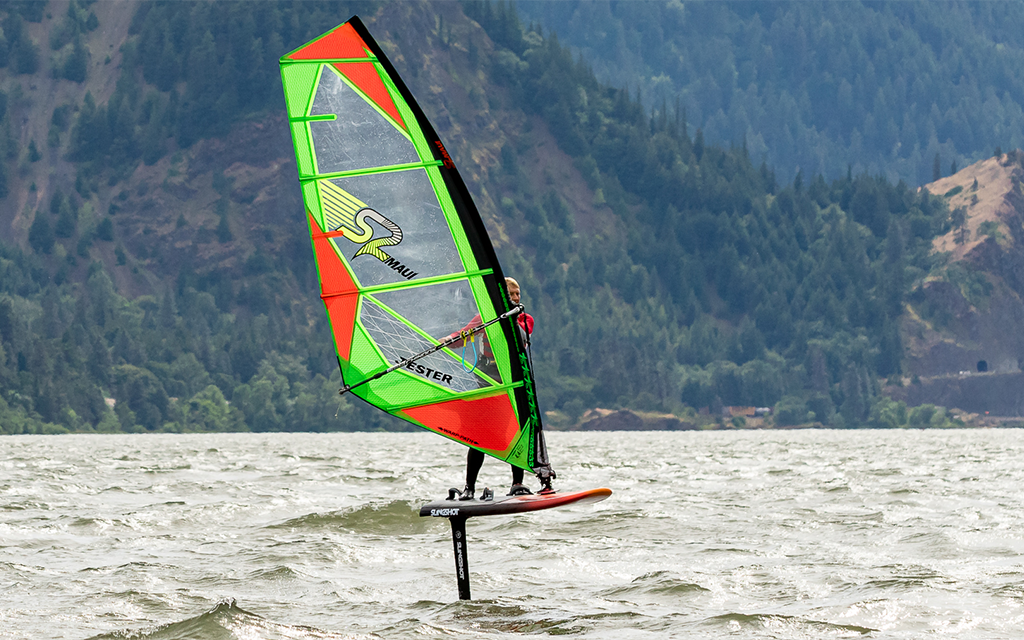
Prepare
Look for an area on the water to perform your Duck Jibe (you will need a lot of space during the learning process), unhook from the harness lines, and take your back foot out of the strap and place it just in front of the back footstraps and over the centerline, slightly biased toward the leeward rail. Stay somewhat upright and balanced over the board.
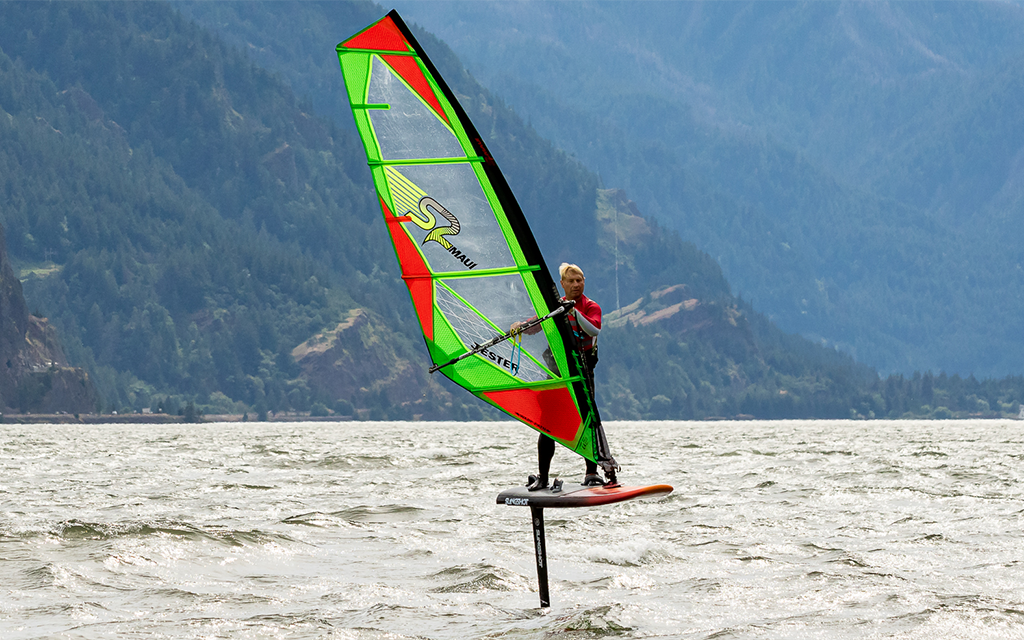
Bear Off Wind
Oversheet the sail and bear off wind a little so you are on a broad reach, further sliding your back foot across the board centerline. You will notice the pressure in the sail decreasing. This is good and easier for the duck. Oh, and I should mention your favorite 1990s rock song will be playing in your head. In the early stages of learning, perform this section of the maneuver with a smooth arc; as you get better, you can be more aggressive.
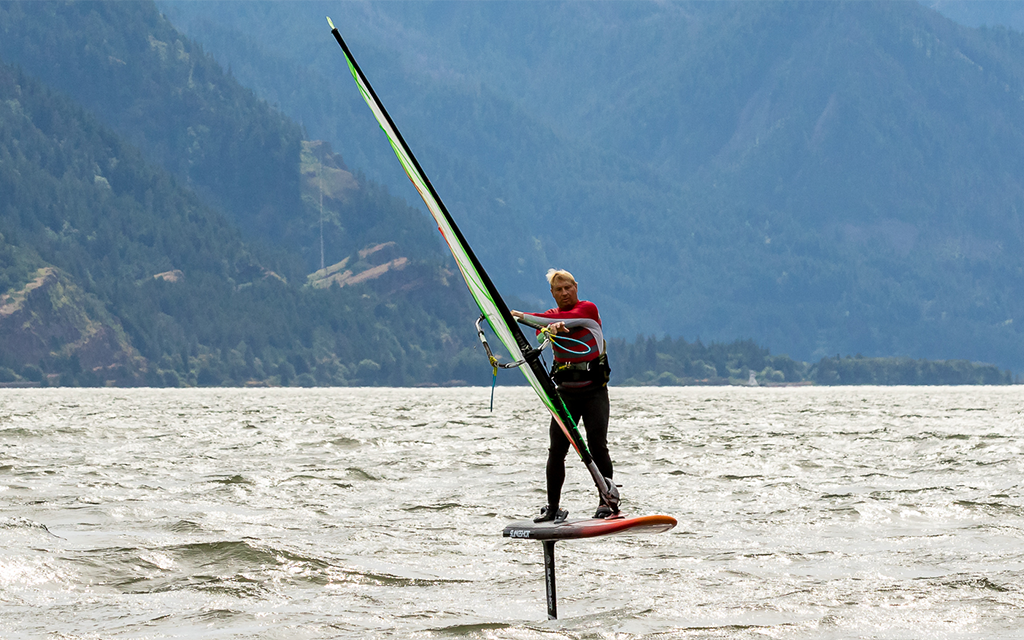
Reach For the Clew
The action happens here! Let go of the front hand and reach back to the clew of the boom. The boom head will drop forward to the front of the board, pivoting on the mast base, so you can let go of the other hand. In other words, you are crossing your arms to grab the clew of the sail with your new back hand; all in preparation for the purpose of ducking the sail. Note: If you are a legacy windsurfer like me, then you will notice this step of the maneuver happens earlier than when you performed it on legacy (with a fin) windsurfing gear.
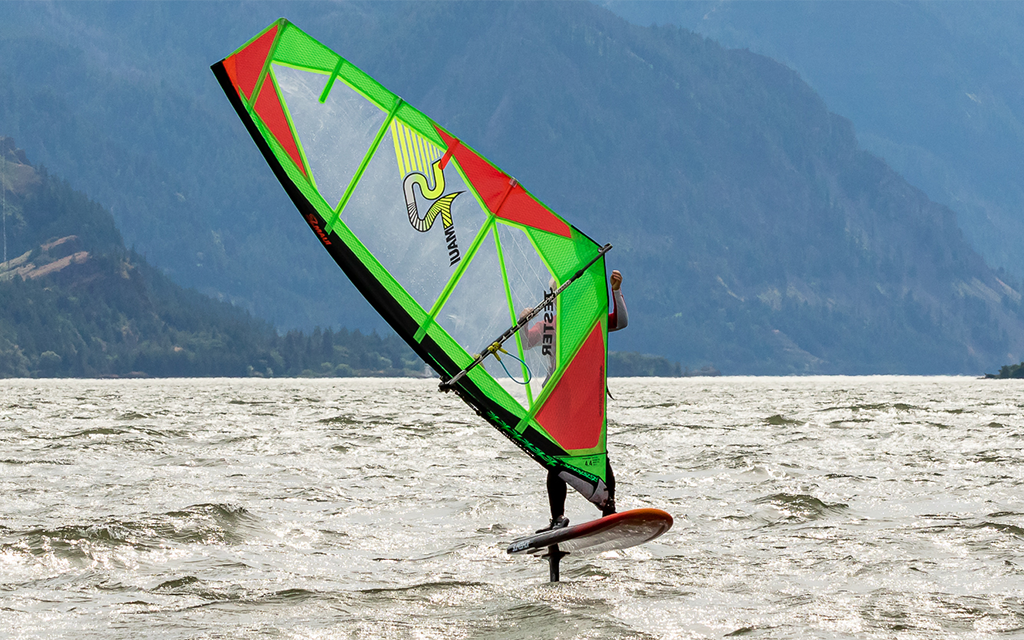
Duck the Sail
Now duck the sail, so you are now positioned on the other side of the sail for the new reach. This will be relatively easy because the sail will be unpowered, just remember to maintain your body over the center of the board and foil (do not lean back or forward). Try to pull the clew back (like you are throwing it behind your ear) so it is easier to grab toward the front of the boom.
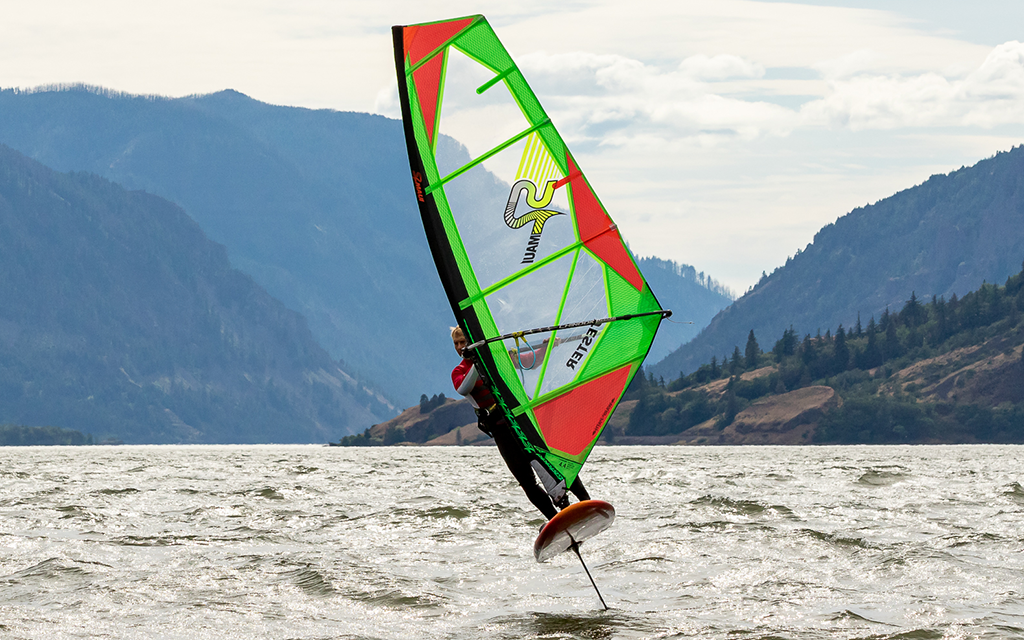
Exit Jibe in Switch Stance.
Adjust your hands on the boom as needed and sheet in the sail while sailing in the switch stance position.
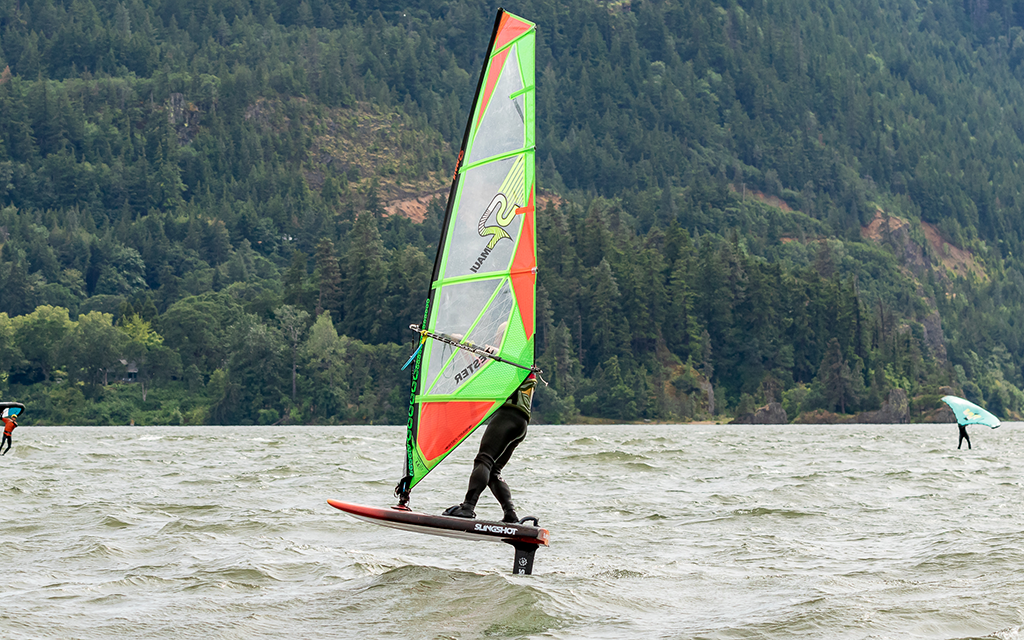
Sail Away
Now sail away in a controlled switch stance. Shuffle the feet to normal position when you feel in control.
Safety
- People Need Their Space - With respect to safety and others, make sure there is plenty of open space before you perform your duck jibe. (no sailors, wingers, kiters, etc.) because other people will feel at risk being close to you while you are gliding by with a foil. Heck, they will probably be shocked, afraid, or angry as the foil glides by them with a vision of decapitation fills their mind. So visually scan all directions: upwind, downwind, behind, and forward. Remember, space is your friend. So keep distance, always!
- Boom, Mast, and Safety - As a general rule of thumb, hanging onto the boom provides some safety in a crash. Why? The boom and mast provide a rigid support to keep you separated from the foil while falling into the water. In addition, it provides separation while in the water. Unfortunately, the DUCK step in this maneuver sacrifices this safety a little in that you are momentarily letting go of the boom.
- Wear Protective Gear For Safety - There is risk in this move for sure, and possible injuries. I recommend loading up with protective gear: wetsuit, booties, helmet, an impact vest, and anything else you feel might help, especially when you're learning the move.
Skill Development
Here are some training drills you can try on the water to help you during your progression in learning How to Duck Jibe a Windfoil.
- Practice Ducking the Sail on land - You see this suggestion often! But damn, I just want to get on the water and get started already. I have been there, but learning new things can take on many strategies and tactics. That said, practicing the hand movement on land allows you to instill the hand movement into muscle memory with efficiently. Just rig up the sail in an open space nearby and practice ducking the sail about 100 times. Do you know how long this would take on the water?

